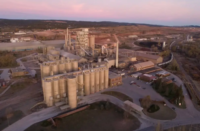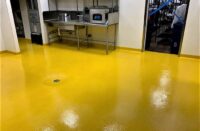PCA’s Executive Committee has approved a goal addressing the implementation of environmental management systems (EMS) for cement plants in the United States. The committee set goals for at least 40 percent of U.S. cement plants to have implemented an auditable and verifiable EMS by the end of 2006, 75 percent by the end of 2010, and 90 percent by the end of 2020.
An EMS identifies the environmental aspects and impacts of a plant’s activities and facilitates continuous improvement of environmental performance.
This effort is the latest component of the industry’s multi-year, sustainable development initiative, Concrete Thinking for a Sustainable World. The initiative is helping outline guidelines for the industry, educate architects and designers about the benefits of concrete in sustainable development, and encourage sustainable cement manufacturing processes.
In June, PCA unveiled the Cement Manufacturing Sustainability (CMS) Program, which began with reduction targets for carbon dioxide emissions and cement kiln dust and included the call to implement EMS. Additional goals are also under consideration.
The cement industry was one of the first industries to tackle climate change by developing policies and improving manufacturing processes that benefit the global environment. Since 1975, the cement industry has reduced its energy usage in manufacturing by 33 percent. The Concrete Thinking initiative will enable PCA to serve as a centralized resource for sustainable development. PCA also will continue its focus on providing information to encourage the industry to further minimize emissions and waste and to use energy efficiently in its manufacturing process as part of the federal government’s Climate VISION program.
The association plans to conduct environmentally focused technical training seminars across the country and to highlight building projects that employ state-of-the-art sustainable development practices using concrete.












